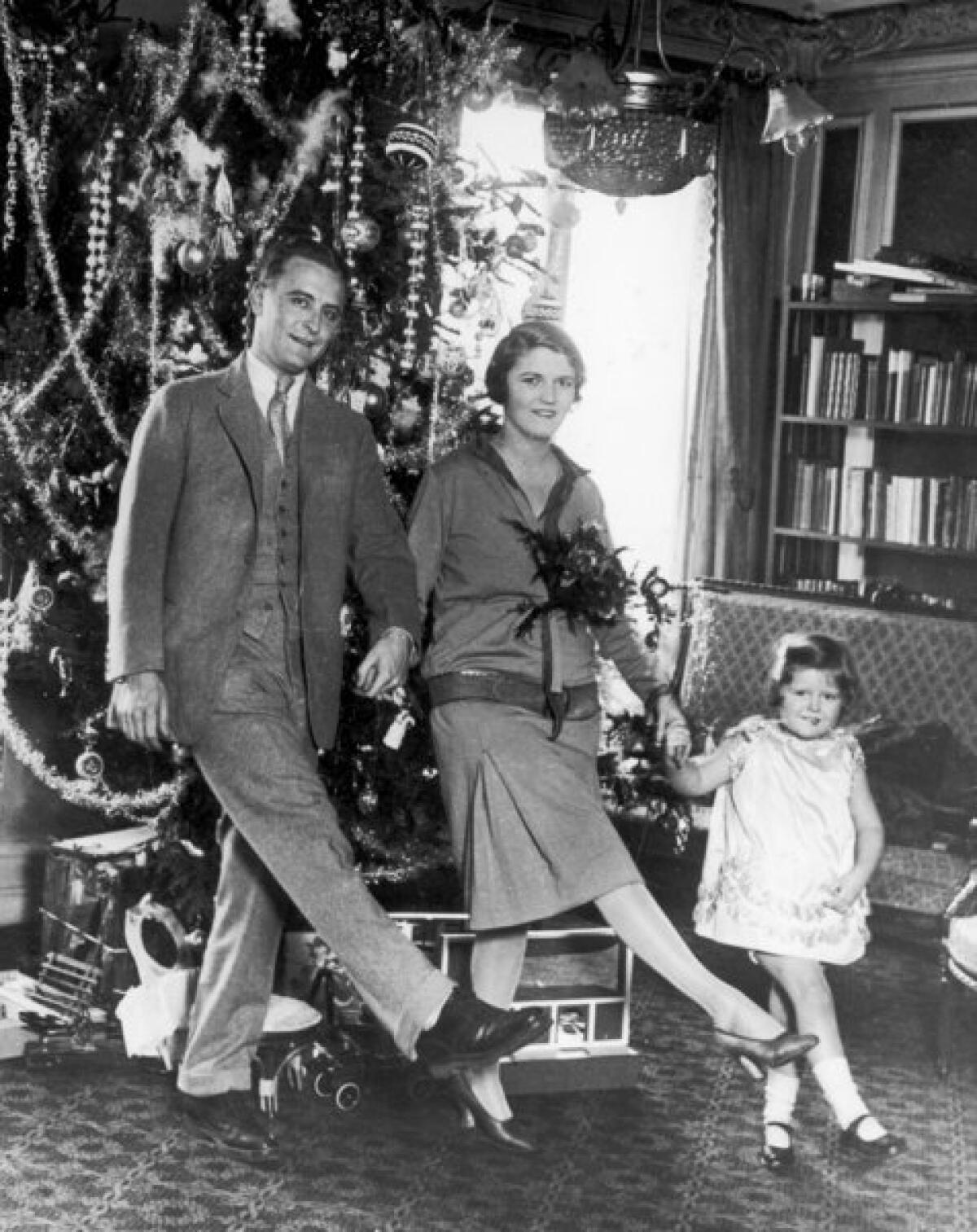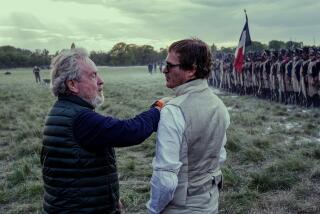‘The Great Gatsby’ review (the book, that is, circa 1925)

- Share via
Baz Luhrmann’s “The Great Gatsby” opens wide this Friday. Eighty-eight years before -- to the day -- the Los Angeles Times ran this review of the original “The Great Gatsby,” the novel by F. Scott Fitzgerald.
Today, perception of the book’s reception in 1925 varies -- some say it was successful, others that it was a dismal failure -- but our review, by Lillian C. Ford, is purely positive. And she captures something of what has made the book a classic.
“The Seamy Side of Society,” read the headline, with this below: “In ‘The Great Gatsby,’ F. Scott Fitzgerald Creates a New Kind of Underworld Character and Throws the Spotlight on the Jaded Lives of the Idle Rich.” The full book review follows:
F. Scott Fitzgerald, who won premature fame in 1920 as the author of “This Side of Paradise,” a book that first turned into literary material the flapper of wealthy parents and of social position, whose principal lack was inhibitions, has in “The Great Gatsby” written a remarkable study of today. It is a novel not to be neglected by those who follow the trend of fiction.
Wisely, Mr. Fitzgerald tells his story through the medium of Nick Carroway [sic], who, after graduation from Yale in 1915 had “participated in the delayed Teutonic migration known as the great war.” When the story opens, Carroway had left his western home and had gone east to learn the bond business. He was living in a tiny house at West Egg, Long Island, near an emblazoned mansion owned by the great Gatsby, an almost mythical person who lived sumptuously, knew no one, but entertained everyone at his great parties given Saturday nights.
Very gradually this Gatsby is revealed as a restless, yearning, baffled nobody, whose connection with bootleggers and bond thieves is suggested, but never mapped out, an odd mixture of vanity and humility, of overgrown ego and of wistful seeker after life.
Across the bay from Gatsby’s mansion, in one of the white palaces of fashionable East Egg, lived Tom and Daisy Buchanan, transplanted from Chicago, but wealthy enough to flourish anywhere. Polo, jazz, cocktails were their earmarks. He, who had been a famous football end a few years before, was now “a sturdy straw-haired man of 30 year of age, with a hard mouth and supercilious manner.” Of his wife, Daisy, Mr. Fitzgerald tells us: “Her face was sad and lovely, with bright things in it, bright eyes and a bright, passionate mouth, but there was an excitement in her voice that men who had cared for her found difficult to forget; a singing compulsion, a whispered ‘Listen,’ a promise that she had done gay, exciting things just a while since and that there were gay, exciting thing hovering in the next hour.”
Daisy soon confided to Nick that Buchanan had “a girl” and Buchanan verified this by asking Nick to a New York party, in which the blowsy wife of a village garage-keeper appeared as the mistress of a week-end flat supported by Buchanan.
That Daisy was humiliated, discomfited, wearied, was her not-too-zealously guarded secret. So when she met Gatsby and discovered in him an old lover, to whom she had been engaged when he was a lieutenant in a training camp, it was not strange that she should dally with him once more.
But it is for no such ordinary denouement that Mr. Fitzgerald tells his tale. Instead, he builds up a tense situation in which Daisy has the chance to choose Gatsby, with his doubtful antecedents and mysterious present connections, or to be as false as it has ever fallen to the lot of woman to be. She took the meaner way, the safe way, and plotted with her husband to save herself from smirch while letting Gatsby in for the worst that could befall him.
Character could not be more skillfully revealed than it is here. Buchanan and his wife, secure, but beneath contempt, standing shoulder to shoulder in the crisis, is a sad picture. “It was all very careless and confused. They were careless people, Tom and Daisy -- they smashed up things and creatures and then retreated back to their money, or their vast carelessness, or whatever it was that kept them together, and let other people clean up the mess they had made.”
The story is powerful as much for what is suggested as for what is told. It leaves the reader in a mood of chastened wonder, in which fact after fact, implication after implication is pondered over, weighed and measured. And when all are linked together, the weight of the story as a revelation of life and as a work of art becomes apparent. And it is very great. Mr. Fitzgerald has certainly arrived.
ALSO:
‘Gatsby,’ ‘Gatz’ and the fallacy of adaptation
Thomas Pynchon’s ‘Inherent Vice’ reported to begin filming
‘On the Road’ toward mortality: A critic ponders Jack Kerouac
Join Carolyn Kellogg on Twitter, Facebook and Google+
More to Read
Sign up for our Book Club newsletter
Get the latest news, events and more from the Los Angeles Times Book Club, and help us get L.A. reading and talking.
You may occasionally receive promotional content from the Los Angeles Times.











